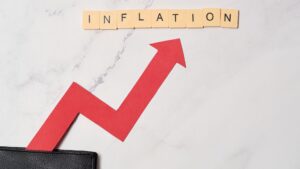T
The driving forces behind the increase in inflation are gas and electricity prices which fell by less than they did this time last year. Gas prices fell by 7.8% while electricity prices fell by 6.8% in July 2024. But, the fall in gas and electricity prices was much more dramatic in July 2023 when they fell by 25.2% and 8.6% respectively.
To put it into context, gas prices are still roughly 68% higher while electricity prices are approximately 45% higher than they were in March 2021.
In contrast, inflation was pushed down by the small fall in prices of hotels and restaurants relative to last year's rise. Prices fell by 0.4% between June and July this year. Last year, they rose by 0.9% over the same period. Some experts believe the fall in hotel and restaurant prices are a result of the Taylor Swift effect. Her UK Eras tour in June drove up hotel prices, which have now normalised.
The 2.2% inflation figure is higher than the Bank of England's 2% target, but still lower than the 2.3% which had been forecasted.
In fact, the Bank of England's own predictions suggest inflation could rise to 2.75% by the end of the year before falling again next year. As such, while the inflation target hasn't been met, inflation increases are below the forecasted figures.
Is a base rate cut likely in September?
The Bank of England cut the base rate from 5.25% to 5% in August and one of the primary factors for the cut was that inflation is now under control.
Finance experts believe that the lower-than-expected increase in inflation is good news for those hoping for another base rate cut before the end of the year. Chances of multiple base rate cuts before the end of the year have gone up too. That said, experts are divided on when the next cut is likely to take place.
AJ Bell Head of Financial Analysis Danni Hewson believes this could be as early as next month, adding: "A lower-than-expected jump in UK inflation has boosted market expectation that the Bank of England could deliver another rate cut next month."
Hargreaves Lansdown's Susannah Streeter, head of money and markets, does not believe a base rate cut is likely until November. She said: "UK inflation has not yet been tamed, veering away from target but not by as much as feared. However, with prices still more unruly, Bank of England policymakers are still set to sit on their hands in September and are not expected to cut rates until November. However, a second reduction by the end of the year now looks more likely."
Experts may disagree on when the next rate cut will take place, but on the whole, they seem to agree that rates will come down again by the end of the year at least once. In fact, data derived from the Bank of England's overnight swap rates suggests we could see rates fall to 4.60% by January 2025. This is likely to impact mortgage and savings rates.
How will the rise in inflation impact savings and mortgage rates?
Despite a small uptick in inflation, rate cuts are still expected and will ultimately be the driving force behind many savings and mortgage interest rates. When the base rate is cut, typically both savings rates and mortgage rates fall.
Falling mortgage rates are good news for homeowners with mortgages and first-time buyers alike. We're already seeing the impact of the latest base rate cut on mortgage products, with many providers slashing their rates.
Nationwide, for instance, recently lowered its mortgage rates across several of its products by 0.20% with a 3.83% five-year fixed deal up for grabs. If you're in the market for a mortgage, check out the best mortgage rates available right now.
For savers, the recent lower-than-expected rise in inflation is not necessarily good news. The recent base rate cut is likely to signal cuts in the interest being offered and rising inflation also erodes the value of interest earned. However, despite the recent base rate cut, there are still several providers offering savings accounts with interest rates above 5%.
While many savings products with higher interest rates are variable, there are still a number of 1-year fixed rate bonds with interest rates above 5%.
As such, if you're a saver, it's worth ensuring you look for the best savings rates available on the market right now and locking in a decent deal before further rate cuts impact you.